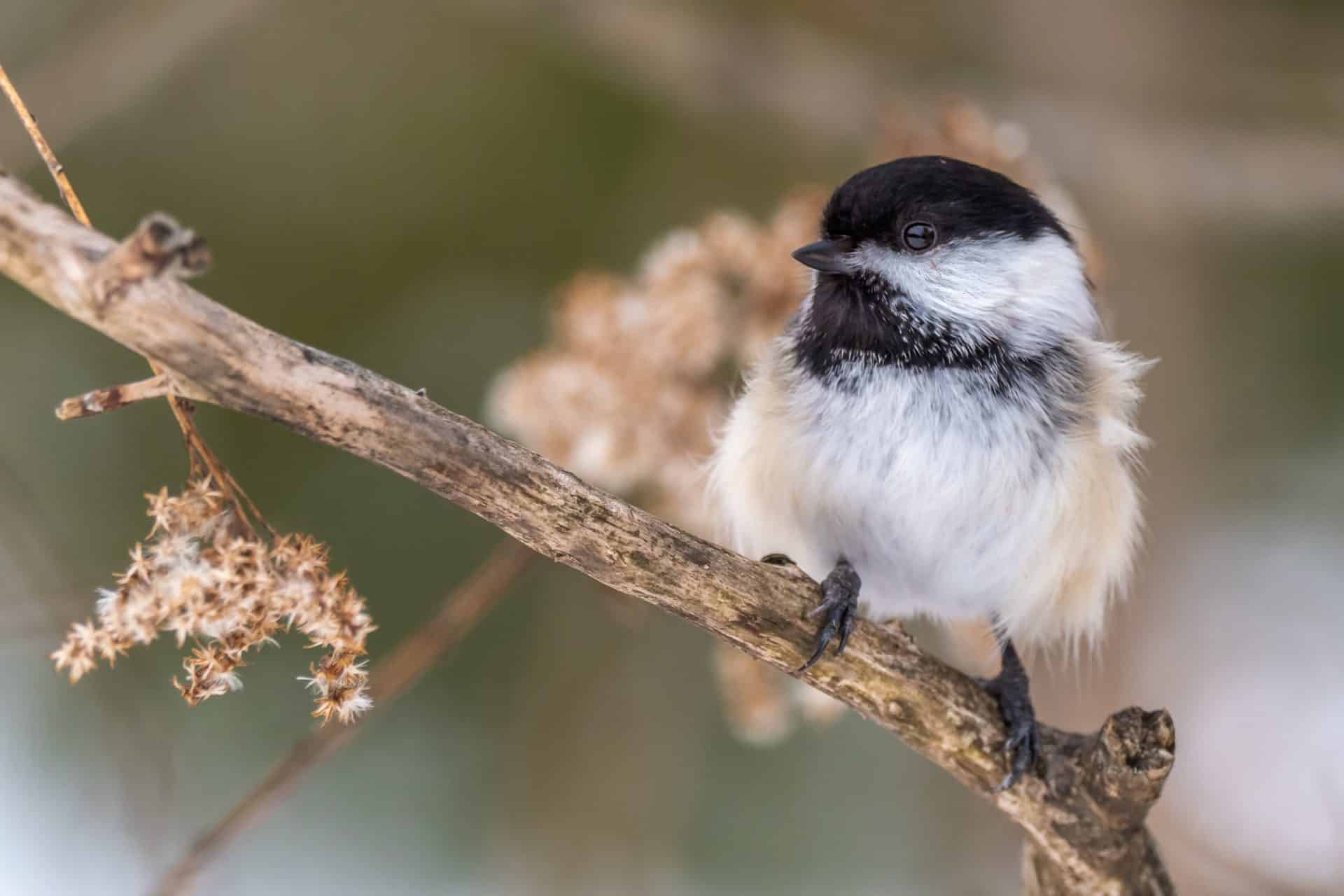Birds
Black-capped chickadee
Poecile atricapillus

Voice: Song: two note whistle with the second note slightly lower. Call: Says its own name
chick-a-dee-dee-dee
Black-capped chickadees are one of the most commonly recognized backyards bird in Northern
Ohio. Their inquisitive behavior and friendly demeanor make them a perfect visitor to any
backyard birdfeeder. They are found year round in both deciduous and evergreen forest, forest
edges, parks, wetlands, thickets, and disturbed areas.
Black-capped chickadees spend most of their day searching for food. At feeders they devour
sunflower seeds, peanuts, suet, peanut butter, and mealworms. On trees, shrubs and herbaceous
plants they move along stems and branches searching in and out of crevices for small
invertebrates. In winter, insect and spider eggs make up half their diet while seeds, berries, and
other plant matter account for the other half. In spring and summer, insects, spiders and small
invertebrates make up 80-90 percent of their diet. When food is plentiful, late summer and fall,
the chickadees hoard food. They stash food under bark, or in patches of lichen. A single
chickadee may stockpile, hundreds of food items in a day; each item placed in a different spot.
Chickadees can remember thousands of food hiding places. They can retrieve the food item with
almost perfect accuracy 24 hours later. Some birds can even remember the location of their cache
for at least 28 days after hiding.
Black-capped chickadees maintain a territory during breeding season. They will call out to
identify themselves, to recognize other flocks and to give predator alarms to other birds
including a different species. The more dee notes in a chickadee-dee-dee call, the greater the
threat level.
In Early April to mid-May black-capped chickadees excavate a cavity in soft or rotten wood in
dead or hollowed out trees. Both male and female chickadees excavate a cavity in a site usually
selected by the female. The cavity averages 8 inches deep and 2-3 inches wide; the female builds
the cup-shaped out of grass and moss, and lines the nest with softer material such as hair, wool,
feathers and spider cocoons. The presence of available trees which can be excavated, determine
the chickadee’s choice of nesting area. If soft wood is not available, they will use existing
woodpecker holes, natural cavities, and man-made nest boxes.
Black-capped chickadees females lay 6-8, sometimes 5-13, white to creamy eggs. Incubation
begins with the last eggs laid for 12-13 days. Young are tended by both parents and leave the
nest after 16 days. Fledglings remain with the adult for 21-28 days after leaving the nest.
What you can do to help? An average lifespan on a Black-capped Chickadee is 2.5 years.
Chickadees require dead upright trees to ensure stable populations. Black-capped chickadees can
suffer when land owners cut down dead trees. By keeping dead trees upright and incorporating
bird feeding station, the Black-capped chickadee will continue to survive and thrive in the
changing world.
Best Location to View: Old Valley Trail, Wildflower Garden, Woodland Trail
Color: Stocky; black cap and chin/ bib; white cheek; gray back and wings; white belly with buffy sides
Range: Canada, North America
Size: 5-6"



